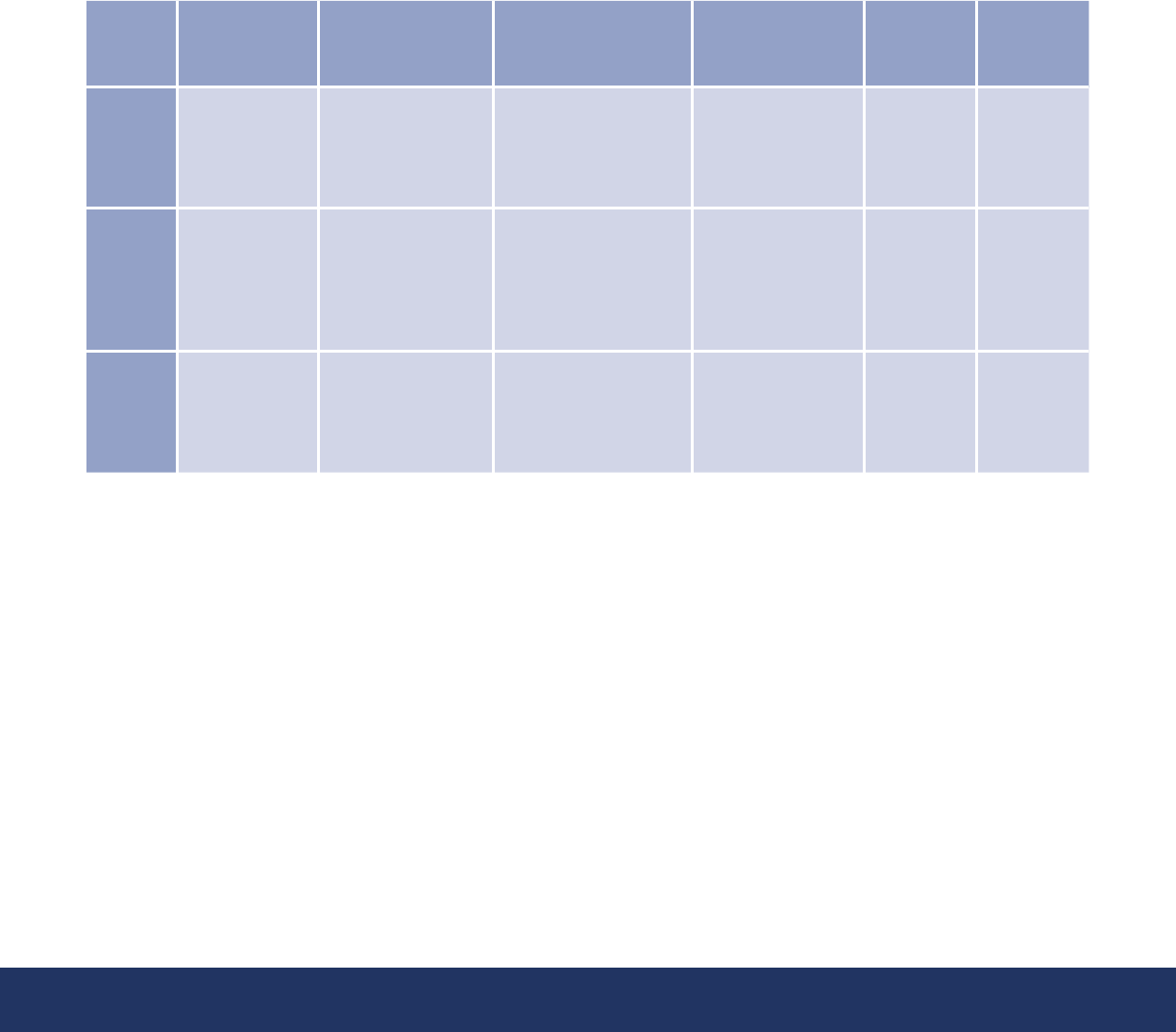
37 | FDIC | Affordable Mortgage Lending Guide
Credit Enhanced Products
OVERVIEW
OVERVIEW
Credit enhanced products require PFIs to share in the
credit risk of the loans sold under the MPF Program. In
return for holding a portion of the credit risk, the PFIs
are paid credit enhancement fees, which provide an
economic incentive to PFIs to retain credit risk on high
quality loans. MPF credit enhanced products vary by
the amount of credit enhancement fee income paid
to the PFI and whether or not that credit enhance-
ment fee is impacted by loan performance, as well
as the amount and structure of the shared credit-risk
arrangement between the PFI and the FHLB. Generally,
higher levels of credit risk assumed by the PFI equates
to higher credit enhancement fees paid to the PFI.
Depending on a PFI’s risk tolerance and collateral
needs, one product may provide greater benet over
another. While the MPF Program offers three distinct
credit enhanced products, each nancial institution
should carefully review the impact of the income
stream associated with the product as well as the
credit enhancement obligations and assess the risks
and benets.
The risk-sharing structures on all three MPF credit
enhanced products are multi-layered. After accounting
for any principal the borrower has paid down on the
loan, loan losses are paid rst from any existing primary
mortgage insurance policy on the property. Mortgage
insurance is required on all MPF transactions with
loan-to-values greater than 80 percent. Any remain-
ing losses are divided between the FHLB and the PFI.
The amount of risk assumed by the FHLB and the PFI
varies by product. The rst layer of losses is absorbed
by the FHLBs’ “rst loss account.” The second layer of
losses, called the “credit enhancement obligation,” is
paid by the PFI. Any losses incurred beyond the credit
enhancement obligation are absorbed by the FHLB.
The credit enhancement obligation is calculated so
that the total credit enhancement amount plus the rst
loss account is sufcient to bring the total loss reserves
for the master commitment to achieve an Acquired
Member Assets (AMA) investment grade.
19
Over time,
this credit enhancement obligation is recalculated. If
the newly calculated credit enhancement obligation
is lower than the remaining obligation, the PFI’s
credit enhancement obligation is reset to the new,
lower level.
The credit enhancement fees paid to the PFI vary by
loan product and by the total size of the MPF
delivery contract.
FHLBs provide three MPF credit-enhanced secondary
market products, MPF Original, MPF 125, and MPF 35.
MPF Original: Secondary market xed-rate con-
ventional mortgage product purchased by the
FHLB and held on its balance sheet. Credit risk is
shared between the FHLB and the PFI. For sharing
the risk, PFIs are usually paid a xed monthly credit
enhancement fee, typically 10 basis points. Credit
enhancement fee income is not impacted by loan
performance. The rst loss account starts at zero
and builds at 4 basis points of outstanding balance
each year. Servicing released or retained options
are available.
19
The FHFA has issued, “Acquired Member Assets (AMA) Final Rule For
Federal Home Loan Bank Investments” that makes certain changes to the
AMA programs. To comply with Dodd-Frank Act mandates that generally bar
regulatory agencies from incorporating NRSRO credit-rating requirements
into regulations, the FHLBs are now required to determine and document
that AMA assets are enhanced at least to an “AMA investment grade,” which
is a determination made by each FHLB based on documented analysis that
includes consideration of applicable insurance, credit enhancements, and
other sources for repayment on the assets. The FHLB must now determine the
total credit enhancement obligation no later than 30 calendar days after the
FHLB completes the purchase of an AMA asset. The nal rule can be found at
Federal Register 81 FR 91674 or https://www.fhfa.gov/SupervisionRegulation/
Rules/Pages/Acquired-Member-Assets-Final-Rule.aspx

FDIC | Affordable Mortgage Lending Guide | 38
MPF 125: Secondary market xed-rate conventional
mortgage product purchased by an FHLB and held
on its balance sheet. Credit risk is shared between
the FHLB and the PFI. For sharing the risk, PFIs are
paid between 6 basis points to 9 basis points credit
enhancement fee monthly. Credit enhancement fee
income is impacted by loan performance. The rst
loss account is set at the time of delivery at 100 basis
points of all loans delivered. Servicing released or
retained options are available.
Credit
Enhancement
Fee Amount
Credit Enhancement
Fee impacted by
loan performance
FHLB First
Loss Account
PFI Credit
Enhancement
Obligation
Servicing
Options
Servicing
Income
MPF
Original
10 basis points No
Starts at zero, builds at
4 basis points
each year calculated
on the outstanding
principal balance
AMA investment
grade
Retained or
released
25 basis
points, if
retained
MPF 125 6-9 basis points Yes
Fixed at 100 basis
points of all loans
sold under the master
commitment
AMA investment
grade less 100
basis points rst
loss account,
minimum 25
basis points
Retained or
released
25 basis
points, if
retained
MPF 35
9-12 basis
points
Yes
Fixed at 35 basis
points of all loans
sold under the master
commitment
AMA investment
grade less 35
basis points rst
loss account
Retained or
released
25 basis
points, if
retained
MPF CREDIT ENHANCED PRODUCT COMPARISON
MPF 35: Secondary market xed-rate conventional
mortgage product purchased by an FHLB and held
on its balance sheet. Credit risk is shared between
the FHLB and the PFI. For sharing the risk, PFIs are
paid between 9 basis points to 12 basis points credit
enhancement fee monthly. Credit enhancement fee
income is impacted by loan performance. The rst
loss account is set at the time of delivery at 35 basis
points of all loans delivered. Servicing released or
retained options are available.
